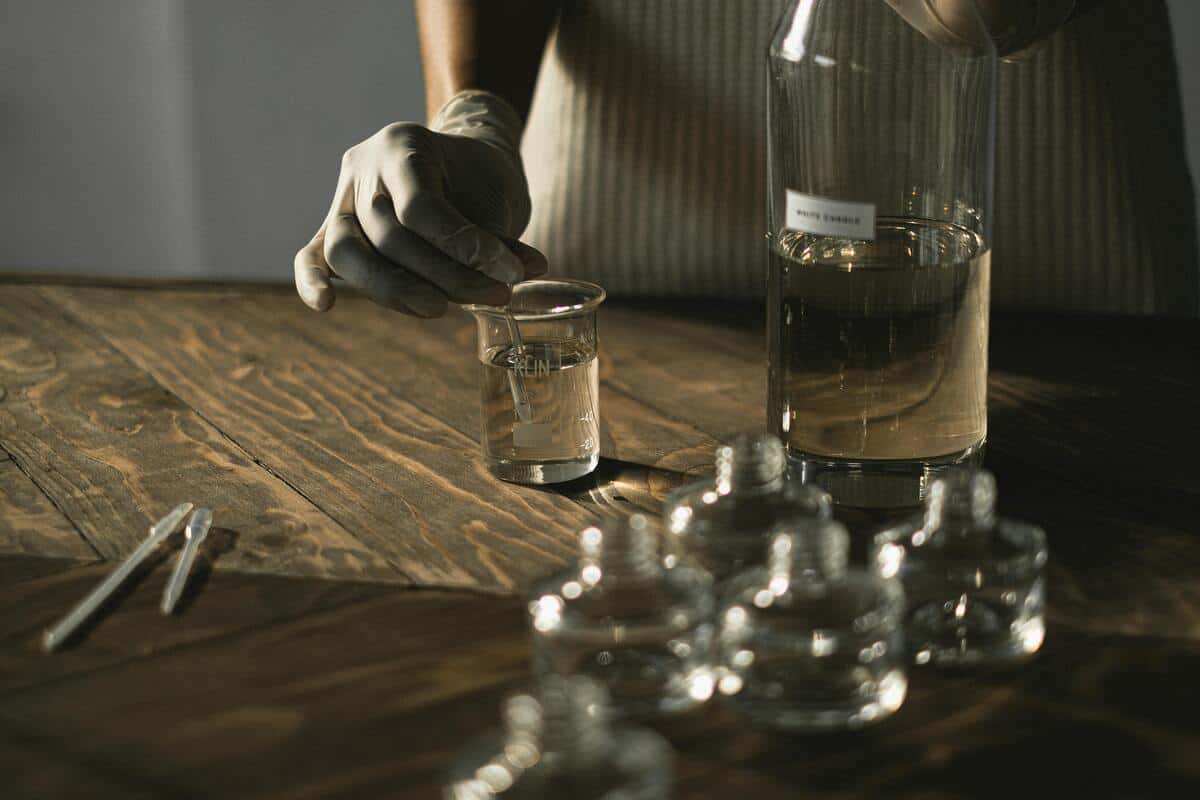What Are Aldehydes in Perfume & How Are They Used?

If you have explored the world of perfumery for some time, you have likely come across the term aldehydes; and, if science is your jam, it may have piqued your interest. Closely associated with the iconic Chanel No. 5, aldehydes are present in varying quantities in almost every modern perfume.
Aldehydes were first used in perfumery in the early 20th century. The most commonly used aldehydes include methyl heptyne carbonyl (MHC), hexyl cinnamaldehyde (HCA), and benzaldehyde. Aldehydes are often used in combination with floral notes and are particularly used to balance strong and intense fragrances, such as white flowers. Also, in modern perfumes, aldehydes are used to create a pleasant, clean scent and are sometimes used to create metallic effects.
What are aldehydes?

In chemistry, an aldehyde is an organic compound born of partial oxidation and containing a carbonyl group (C=O). The carbon atom must be bonded to at least one hydrogen atom (R-CH=O) for the compound to be classified as an aldehyde. You will find aldehydes in natural essences from orange rind, rose, pine essence, cinnamon, citronella, and more. However, they can just as easily be created in a laboratory.
Aldehydes in perfumery: What do they smell like?
Aliphatic aldehydes, aromatic aldehydes, and generally aldehydes with a higher molecular weight are used in perfumery, but they are all built differently. Each evokes a certain type of scent and is used accordingly in note profiles. Hence, it is not quite so easy to answer the lingering question in the air — what do aldehydes smell like? If you have ever heard a fragrance being described as sparkling, fizzy, and electric, chances are that it contains a significant amount of aldehydes. Aldehydes smell distinctly soapy, almost waxy, and you will be able to detect floral and citrus undertones. Furthermore, they are able to amplify the olfactory accords they are paired with.
Legacy of aldehydes in perfumery
Chanel No. 5 being the first fragrance to incorporate synthetic components, specifically aldehydes, is one of the most commonly perpetuated myths in perfume history. Fougère Royale, created for Houbigant by Paul Parquet in 1882, was the first modern fragrance to feature synthetic compounds. And, aldehydes were first used in perfumery by Louis Armingeat when he created Rêve D’Or (Golden Dream) in 1905.
However, credit has to be given where credit is due. Chanel No. 5’s utilization of aldehydes changed the way they were perceived by the fragrance industry. Ernest Beaux, in an accidental stroke of genius, put a much larger quantity of aldehydes than planned when working on a sample of the perfume for Gabrielle “Coco” Chanel. Little did he know at the time that he had created the trio of “fatty” aldehydes, namely C10, C11, and C12, that would dominate Western perfumery for the better part of the next decade. Coco Chanel fell in love with the rather unnatural aroma of Beaux’s formulation since she had wanted No. 5 to smell of a woman and not a floral arrangement. Some time down the line, even Chanel No. 22 was made with a ton of “fatty” aldehydes so it would retain a similar essence.
Are aldehydes in perfume bad for you?

Aldehydes in perfumes are not bad for you. As long as you purchase your fragrances from reputable brands, you can rest assured that you will face no negative consequences due to your love for the aldehydic family. Contact with aldehydes is perfectly safe when the formulation has been conceived with the use case in mind.
Commonly used aldehydes in perfumery
Each aliphatic aldehyde boasts a unique smell, so here is a brief overview of aldehydes that are widely used in niche and designer perfumery:
- C7 – This heptanal compound, found in clary sage, has an herbal green aroma. It is reminiscent of a lush meadow lined with flowers.
- C8 – This octanal compound has a fruity aroma and is mostly found in citrus oils. If one has to be specific, it smells like fresh oranges.
- C9 – This nonanal compound has a rosy fragrance with hints of jasmine that can translate as warm and cozy or fresh and clean depending on how it is incorporated in a fragrance.
- C10 – This decanal compound will immediately remind you of either an orange rind or a basket full of lemons depending on its structure.
- C11 – This undecanal compound, found naturally in coriander leaf oil, smells fresh and clean with hints of citrus.
- C12 – This dodecanal compound, found in citrus oils, is highly versatile in perfumery as its odor profile changes based on usage. It has a metallic touch when concentrated, but a diluted version evokes soft florals like lilacs and violets. It can easily slip into the herbaceous territory as well.
- C13 – This tridecanal compound is bound to remind you of a grapefruit. It smells soapy, fresh, and waxy with strong citrus undertones and is pleasing to most noses.
- C14 – Of Mitsouko fame, this undecane compound is technically a lactone but is often referred to as a peach aldehyde due to its sweet and fruity odor.
Aromatic aldehydes are usually quite complex, but you may have a surprisingly easy time identifying their smells once you are familiar with them. For example, the hawthorn or aubépine note in Après L’Ondée by Guerlain is made using anisic aldehyde (p-methoxy benzaldehyde. Anisaldehyde is reminiscent of licorice, and benzaldehyde has the typical nutty odor of almonds. You may know that jasmine can be quite expensive as a raw material in perfumery depending on its source. Amylcinnamic aldehydes (ACA) and hexylcinnamic aldehydes (HCA) are synthetic compounds that smell exactly like jasmine; hence, they are often used as substitutes.
Recommendations for aldehydic perfumes
Aldehydes have become a staple in perfumery due to their versatility and dynamism. If you would like to try out aldehydic perfumes, here are a few recommendations besides the iconic Chanel offerings:
- Rive Gauche by Yves Saint Laurent
- The Different Company’s Pure Eve
- Arpège by Lanvin
- Lazy Sunday Morning by Maison Margiela
- L’Interdit by Givenchy
- Blanche by Byredo
- Iris Poudre by Frederic Malle

